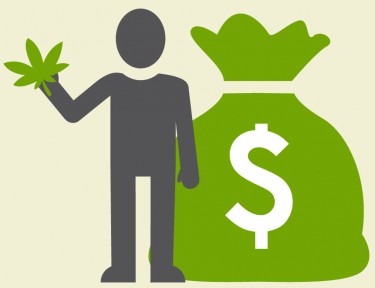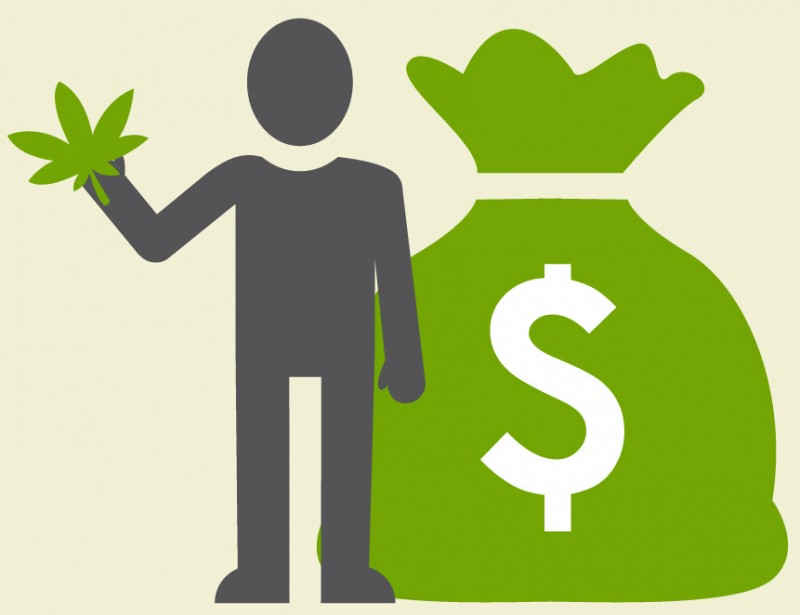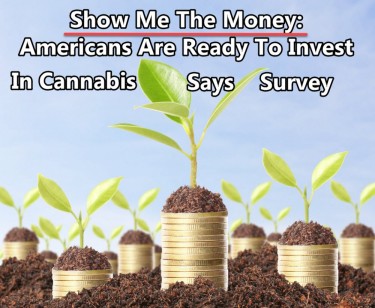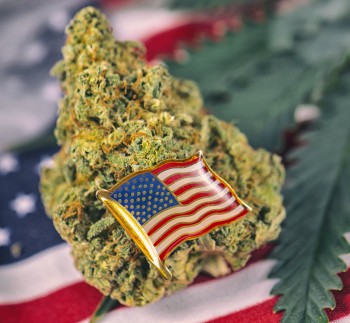Surge in Demand for Cannabis Causes Prices to Skyrocket

One year into the pandemic, and we’re only just about to start seeing a glimmer of hope with the vaccine rollout.
So how has the last year been? For some industries, COVID-19 shattered their businesses but the pandemic was kind to the cannabis industry. All over the United States, sales of legal cannabis jumped 46%, reaching record-breaking sales of $17.5 billion.
A majority of the sales were in adult-use markets, particularly Colorado which is among the more mature markets. They saw a 26% increase in growth, resulting in $2.2 billion in sales, while Oregon saw a 29% increase resulting in $1.1 billion in sales, says a cannabis data firm, BDSA Analytics.
“We expected more potential impact from an economic downturn, but the industry has proven to be resilient,” explains Kelly Nielsen, head of insights and analytics at BDA. “It’s potentially recession-proof.” She goes on to say that there were three factors that contributed to the growth of the cannabis industry in 2020: for one, during the pandemic, cannabis services were deemed essential; then there was also the fact that more customers started buying from mature markets including Colorado, Oregon, and California. Lastly, new recreational markets popped up in Arizona and Illinois.
One thing that also needs to be said is that simply, people are just consuming more cannabis than ever before. In states with legal adult-use markets, the number of people who consumed cannabis jumped to 43% from 38%. “Close to 50% market penetration is really compelling, as alcohol penetration is around 60%,” Nielsen says.
Meanwhile, another report this time from Grand View Research, points out that more medical practitioners are recommending cannabis to treat a wide range of ailments, which is now contributing to a higher demand. They also note that more people are suffering from chronic pain these days, while cancer patients around the country need cannabis for pain management. These two are expected to continue driving a high demand for cannabis. “The rise in the number of patients suffering from mental conditions is expected to drive the demand for legal marijuana over the forecast period… Rise in awareness regarding the health benefits of these products, increasing the legalization of medical cannabis, growing consumption, and expansion of the product portfolio is estimated to boost the market growth in the region during the forecast period,” reads the report.
Higher Demand, Higher Prices
It’s basic economics, so naturally the price of cannabis went up. Data from Headset, a Seattle-based analytics company specializing in cannabis, says that the average retail price for recreational cannabis flower in four states continued to get high throughout the pandemic. In Colorado, California, Washington and Nevada, they observed a 17% price increase while the cost of pre-rolled cannabis jumped 15%.
Headset analyzed data over a past 90-day period and compared it with the same period in 2020. Retailers are loving the price hike and strong consumer demand, helping the cannabis economy boom even more. They also note that the price of wholesale flower in Colorado peaked for the first time since 2016, as the average price for a pound of cannabis flower jumped 31% from the start of October 2020 throughout the end of January 2021.
Impact of High Prices
While this is great news for retailers and the industry as a whole, higher prices are turning off many customers. Instead, a great deal of people prefer to keep their black market dealers on speed dial for more competitive prices and better availability of their preferred flowers.
That’s not even to mention the hefty taxes involved. Cannabis sales taxes are extremely high, with some products imposing a whopping 25% sales tax which is determined by the state, while some have it even more. Once the taxes have been configured into the price, oftentimes for customers it simply doesn’t make sense anymore to buy legal cannabis from a dispensary.
If governments really want to curb the black market, legal cannabis should be priced relatively low, such as around or slightly less than how much illegal cannabis sells for. Doing so will be beneficial in attracting more people to use it legally, but unfortunately that just isn’t how economics works.
There’s also the fact that the cannabis these days is more potent than ever, with high THC strains and products dominating the shelves at dispensaries. Naturally, higher THC products will cost more, but there’s still a market for it especially for THC products that are over 25% THC.
But do we have a choice? Well, if you buy online, you have a chance of finding a good deal, but dispensaries in legal states can be notorious for the high prices of cannabis. That’s because regulations and startup costs alone are already a large expense for dispensary owners, just like any other new business. In California, for example, it’s $1,000 to apply for permits and licenses to put up a dispensary and if you’re successful, you’ll need another $120,000 more to cough up.
Then there are the real estate costs. Of course, it would vary depending on the location but in California, you’ll be hard pressed to find anything under $50,000 whereas its normal to spend even three times that amount for a good dispensary location. You also have to shell out for point of sale systems, security, inventory, advertising, and other ancillary costs.
In short, it would be up to the government to work out ways of making cannabis lucrative for business owners while ensuring that they are kept affordable for consumers. Millions of people rely on cannabis for life-saving medicine, while some need it to function, or just get out of bed. Without the help of the government, demand will continue to skyrocket and so will prices, forcing many to the black market.






